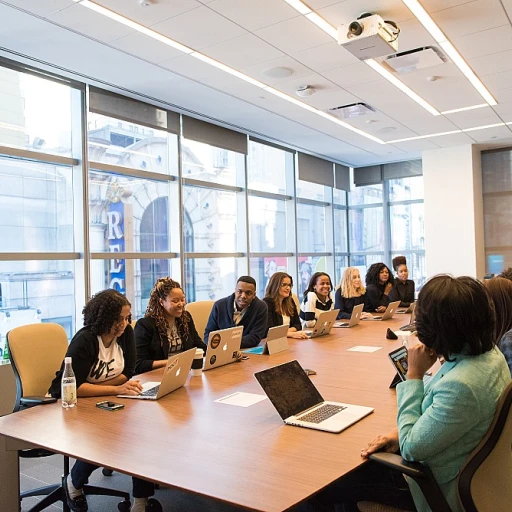Understanding Total Rewards
Decoding the Concept of Total Rewards
In the realm of compensation and benefits, the term "total rewards" has gained significant traction, referring to the comprehensive package that employers design to attract, motivate, and retain employees. Total rewards go beyond the basic salary to encompass all the tools at an employer's disposal to incentivize their workforce. This strategy is integral for fostering a culture that aligns with both organizational goals and employee well-being.
Think of total rewards as a multifaceted approach that aligns financial compensation with non-monetary benefits. This includes health and wellness programs, retirement plans, and paid leave, which are foundational elements of the package. However, it's also about creating a positive work environment, offering opportunities for growth, and recognizing outstanding performance. Each of these elements will be further explored in this article to provide a holistic view of an effective total rewards strategy.
The true value of total rewards lies in its ability to cater to the diverse needs of a modern workforce. Employees today seek more than just a paycheck—they desire work-life balance, career advancement, and a sense of purpose within their job roles. Understanding and integrating these components makes for a winning strategy that benefits both the employer and the employees.
To gain a deeper insight into the crafting of an efficient total rewards strategy, explore the
art of crafting a winning strategy. The ability to successfully integrate monetary and non-monetary aspects is what distinguishes leading employers in today's global market.
As the article proceeds, we will delve into how this approach contributes to employee satisfaction, work-life balance, and career development opportunities—cornerstones of a robust and engaging compensation program.
The Importance of Employee Satisfaction
Prioritizing Employee Contentment
In today's competitive job market, an emphasis on employee satisfaction cannot be overstated. Companies are realizing that a happy workforce is not only more productive but also more loyal. This makes understanding the key drivers of employee satisfaction crucial for any organization aiming to craft a winning total rewards approach.
To enhance employee satisfaction, it’s vital to engage in effective communication and involve employees in decision-making processes. Building a workplace culture that values feedback and open discussions can significantly impact how employees feel about their roles and the organization.
Additionally, ensuring employees feel valued concerning their total compensation package is a fundamental component. This includes not just salary but also benefits, work-life balance, and opportunities for growth and development.
According to studies on
mastering the art of compensation management systems, aligning compensation systems with employee expectations and company goals is crucial. A well-structured compensation management system can boost morale and drive higher levels of employee engagement.
By strategically enhancing employee satisfaction, companies can create an environment where both the organization and its employees thrive. As discussed earlier, balancing work and life, recognizing achievements, and offering career development opportunities are key elements that contribute significantly to employee satisfaction.
Balancing Work and Life
Striking the Right Balance
In the quest to create a comprehensive rewards system, finding harmony between work and personal life is essential. A well-rounded approach to total rewards acknowledges that employees are more than just their job titles. They are individuals with unique needs and aspirations, both within and outside the workplace.
When organizations prioritize work-life balance, they demonstrate a commitment to the holistic well-being of their employees. This commitment can take many forms, from flexible working hours and remote work options to wellness programs and mental health support. By offering such benefits, companies not only enhance employee satisfaction but also boost productivity and reduce turnover.
It's important to remember that the modern workforce values flexibility and autonomy. As discussed in the section on employee satisfaction, understanding what employees truly value can help tailor a rewards strategy that resonates. This tailored approach ensures that employees feel valued and supported, which in turn fosters loyalty and engagement.
For more insights on how compensation and benefits play a crucial role in HR, explore the essential role of compensation and benefits.
Spotlight on Acknowledgment and Incentives
In the realm of total rewards, recognizing and rewarding performance plays a pivotal role in reinforcing desired behaviors and driving employee engagement. At its core, effective recognition is about valuing and acknowledging individuals' contributions and achievements. It’s an essential component in maintaining morale and promoting a culture where employees feel respected and appreciated.
To establish a robust recognition system, it’s important to consider both monetary and non-monetary rewards. While financial incentives such as bonuses and raises are significant motivators, non-monetary forms of recognition like praise, awards, or additional responsibilities can also have a profound impact. Remember, the key is to tailor these rewards to the individual preferences and the organizational culture.
Furthermore, a well-structured rewards system should be transparent and aligned with the company’s objectives. Clear communication ensures that employees understand how their efforts tie into larger organizational goals. By linking rewards to performance metrics that are well-defined and easily measurable, companies can ensure a fair and consistent approach to recognizing achievements.
In addition to formal recognition programs, fostering an environment where informal acknowledgment is commonplace can further enrich the workplace culture. A simple ‘thank you’ or public acknowledgment during a team meeting can go a long way in reinforcing positive actions and encouraging continued excellence.
When crafting your organization’s recognition and reward strategy, remember that it should evolve with evolving business needs and workforce expectations. Continuously solicit feedback and be prepared to adapt to maintain its effectiveness in driving performance and satisfaction, ultimately contributing to the overall success outlined in the previous sections of this article.
Career Development Opportunities
Unlocking Professional Growth for Employees
In the ever-evolving landscape of modern workplaces, offering a well-rounded career development as part of your comprehensive rewards strategy is not merely an option but a necessity. Employees today are more focused than ever on their professional growth, seeking opportunities that not only bolster their skills but also enhance their career trajectories. Crafting a rewards strategy that integrates career development options can significantly boost morale and retention, as employees feel valued and supported in their career journeys.
Prioritizing Skill Development
Organizations should prioritize offering structured opportunities for skill development, allowing employees to enhance their expertise and embrace new challenges. Providing access to training programs, workshops, and certifications can create a culture of continuous learning within the company. When individuals feel that they are growing and evolving in their roles, they are more likely to remain engaged and motivated, significantly impacting overall productivity.
Mentoring and Coaching Opportunities
Mentorship is an invaluable component of employee development that can also be seamlessly integrated into a total rewards strategy. Establishing mentorship programs fosters a supportive community where experienced individuals guide less experienced team members, sharing insights and industry knowledge. This not only aids in personal development but also builds a sense of camaraderie and belonging among employees.
Coaching, on the other hand, provides one-on-one support tailored to individual growth needs. It addresses specific challenges and assists in aligning personal goals with organizational objectives. Whether through internal resources or external professionals, coaching sessions can be instrumental in helping employees achieve their aspirations.
Creating Clear Career Pathways
Another critical aspect is the creation of transparent career pathways within the organization. Having a clear vision of potential growth trajectories easily available to employees instills a sense of purpose and direction. Regular performance reviews should align with these pathways, providing constructive feedback and highlighting future opportunities. This clarity helps employees envision their future within the company, making them more likely to commit and thrive in their roles.
In conclusion, by integrating a strategic focus on career development, organizations can cultivate a workforce that is not only skilled but also deeply invested in their personal growth and the success of the company. This holistic approach to employee development is instrumental in building robust, dynamic teams equipped to meet the challenges of today’s business environment.
Implementing an Effective Total Rewards Program
Crafting an Effective Strategy
Implementing a successful total rewards program requires a strategic approach that combines all the elements of the previous sections. It is the culmination of understanding what total rewards are, the significance of employee satisfaction, the balance between work and life, recognition, and performance, as well as career development opportunities.
A comprehensive total rewards program acts as a blueprint that aligns with the company's objectives and employee expectations. The key to successful implementation is ensuring that each component of the rewards strategy interlinks seamlessly, offering a cohesive and attractive proposition for current and future employees alike.
Start by assessing the current compensation and benefits structure within your organization. Identify any gaps or areas for improvement by considering employee feedback and market trends. Remember, a tailored approach that reflects the unique culture and values of your organization will yield better results than a generic strategy.
Engage stakeholders at every level to promote transparency and gain buy-in. This collaboration fosters a sense of ownership and commitment, which is crucial for the smooth execution of any rewards program. Clear communication is also vital; employees should understand how the total rewards system functions and its benefits.
Finally, establish metrics for success. Monitoring progress and adapting to change ensures the total rewards strategy remains relevant and effective. Regularly revisit the program to ensure it continues to meet organizational goals and employee needs, keeping pace with an ever-evolving work environment.








